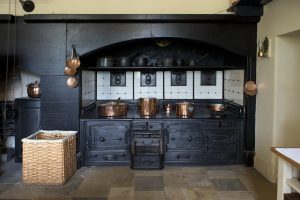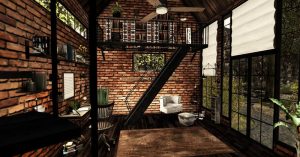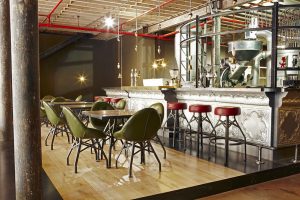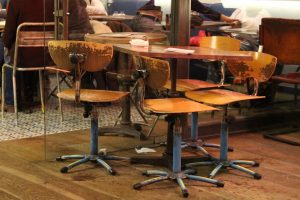Industrial design exposes building materials that are traditionally concealed, such as raw ducts and exposed pipes. Additionally, the aesthetic style became popular in the late 2000s.

Image source: https://pxhere.com/en/photo/728444
Origins of the style
The style developed during the early 20th century, yet dates back to the end of the 2nd industrial revolution, which introduced new technologies and mechanized manufacturing. In the early 20th century closed-down factories became a prime source of real estate. In addition, city populations increased due to urbanization, which led to a shortage of residential buildings. Thus, they converted abandoned mills and warehouses into livable quarters. Moreover, architects and homeowners changed industrial buildings, adding architectural, modern and stylish details.
What is urban industrial style?
Urban Industrial style developed in the United States, during the 1950s. New York City was the center of Bohemian lifestyle artists, who appreciated the unique open-plan spaces where they mixed their personal and professional life. For example, Andy Warhol’s Factory was a former factory in Manhattan, which became an «art venue» during the years of Pop Art.

Image source:https://www.flickr.com/photos/kyliejaxxon/32643495537 by Kylie_Jaxxon
Nowadays, the style gains inspiration from lofty factories, warehouses and other industrial structures. Moreover, architectural details include the use of metals, bare bricks and wood. Further, industrial style furnishings are usually obtained from reclaimed yards. Industrial design also has unexpected materials, such as shipping containers.
Key Elements of the style

Image source: https://www.flickr.com/photos/haldanemartin/8071360766 by Haldane Martin
Color – Neutral palettes of black, gray and white, with hints of darker tones. Warm colors, like tans and browns, make the space more inviting. Yet, neutral tones do not distract from exposed elements. Additionally, walls remain unpainted or modeled on the masonry look.
Silhouette – Shapes for industrial design consist mostly of blocky shapes and squared lines. The style embraces simplicity in every way possible: form, function and silhouettes.
Materials – Metal is the main material that characterizes the style. Combining distressed metal elements such as steel, iron and aluminum and wooden floors, are also indicators of industrial design. Moreover, wood adds texture and warmth, while metal is sleek and modern. Plus, vintage wood optics, such as furniture made of pallets, might also be used.
Industrial Style Accessories

Image source:https://pxhere.com/en/photo/1292402
As for accessories, large abstract wall art, metal structures and different objects salvaged from a reclamation were present. In terms of lighting, filament bulbs with long cables are present in industrial interior design. Sometimes these long cables are “knotted.” In addition, light, such as the red-gold light of the bulbs, create a cozy atmosphere. The style can also feel homey with fake fur and pillows, with large-meshed carpets, and old stamps or newspaper clippings.

Image source: https://commons.wikimedia.org/wiki/File:Glowing_bulbs_(Unsplash).jpg
Info source:
https://www.apartmenttherapy.com/industrial-style-36771433
https://en.wikipedia.org/wiki/Category:Industrial_Style_architecture
https://www.decoist.com/2014-01-20/industrial-interior-designs/?chrome=1
https://www.urban95.com/blogs/news/112534727-what-is-urban-industrial-style
https://www.decoraid.com/blog/interior-design-styles-definition/industrial-
